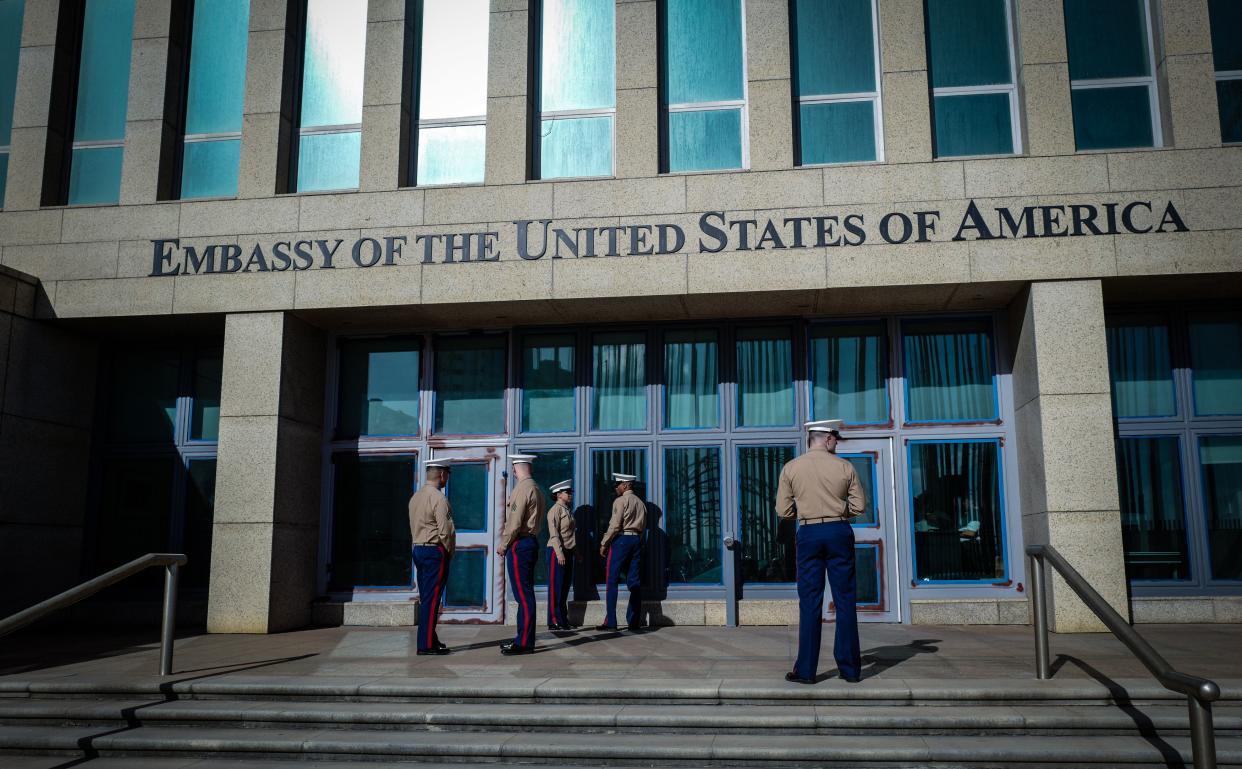As Cuba medical mystery deepens, State Department turns to new scientific panel for answers

WASHINGTON — Scientists investigating what’s been affecting the health of dozens of U.S. government personnel stationed in Cuba have a variety of theories, everything from surveillance technology gone awry to exotic weaponry involving microwaves or sound. Now, with no clear answer more than two years later, the State Department is turning to a new panel of scientists to investigate the cause, according to a document obtained by Yahoo News.
Though still in its nascent stage, a standing committee at the National Academies of Sciences, Engineering, and Medicine will be aimed at “understanding the current cases of potential acoustic trauma, and develop a better understanding of possible causes of these cases and approaches for future incidents, whether of an apparent acoustic nature or a different environmental or clinical presentation,” says a “statement of task” sent to prospective members. “The standing committee will also keep [the State Department] abreast of any emerging concerns, interventions, and protective measures as these come available.”
The U.S. government has been struggling to find scientific answers for the Cuba mystery since late 2016, when U.S. personnel at the U.S. Embassy in Havana first began to report a constellation of symptoms that appeared to start after hearing unusual noises. The symptoms include dizziness, hearing loss and difficulty concentrating; in some cases they were so severe that some personnel couldn’t return to work.
Most of those affected were reportedly U.S. intelligence officers operating under diplomatic cover, though Canada has also reported cases among their diplomatic staff.
Since the reports were first made public in 2017, a variety of theories have been proposed to account for the symptoms, including microwave weapons to mass hysteria. Though the cause is still unknown, the State Department has characterized it as a “health attack,” effectively blaming the Cuban government.
Yet scientists, even those who have examined the affected personnel, are deeply divided on the cause of the injury, and even the type of injury sustained. Last year, scientists at University of Pennsylvania concluded that the personnel they examined showed evidence of mild traumatic brain injury, according to an article published in the Journal of American Medical Association. But another group at the University of Miami, which was the first to examine embassy personnel, determined they were suffering from inner ear injuries that were, among other things, affecting their balance.
The Miami group, which first presented their findings last fall, also concluded that the injuries were likely the result of some type of neuroweapon, though no evidence has been publicly presented of such a weapon.
While the government has a great deal of in-house scientific expertise at various agencies, the National Academies can assemble some of the country’s best experts very quickly to look at complex subjects, according to John Holdren, who served for eight years as a science adviser to President Barack Obama.
“I think in this case, the State Department going to the National Academy of Sciences is a good idea, and a good move,” said Holdren, who is now a professor at Harvard University. “In part because the independent authority of the academy on scientific matters is often very helpful to policymakers when they need to run with a conclusion, but are reluctant to base it entirely on information coming from within the scientific capacity in government itself.”
A spokesperson for the National Academies of Sciences did not respond to a request for comment.
The State Department has turned to outside expertise to look at the Cuba incidents, including JASON, an independent panel of elite scientists who often advise the government on issues of national security. Yet the department has also faced criticism, including from Congress, for failing to initially engage the Centers for Disease Control and Prevention, which is now involved in reviewing the incidents.
In addition to various government reviews, a cottage industry has sprung up of scientists pushing theories for what could explain the reported symptoms. For example, a group at the University of Michigan speculated that the cause could be ultrasonic surveillance devices. More recently, scientists have alleged that the sounds the affected personnel heard are not any sort of device or weapon, but merely crickets attempting to mate.
Yet neither of those papers appear to have been published in a peer-reviewed journal, long considered a prerequisite for proper scientific research.
The State Department, for its part, now appears to be seeking answers from the widest array of experts.
“We are pleased that the Health and Medical Division of the National Academies of Sciences, Engineering, and Medicine will assist the Department, as we seek independent, expert guidance as part of the Department’s effort to better understand the unexplained health incidents at posts abroad and determine best medical practices for screening, prevention, and treatment for both short- and long-term care,” a State Department official, who asked not to be named, told Yahoo News. “The Department has collaborated with the National Academies of Sciences in the past on other topics that affect the health and well-being of Department personnel.”
The official noted that other scientists, including brain injury specialists at University of Pennsylvania, are continuing to investigate the causes.
Holdren, the former presidential science adviser, said that trying various options is something to be applauded. “Basically you go wherever you have to go to get the expertise and capacities required,” he said.
_____
Read more from Yahoo News:


